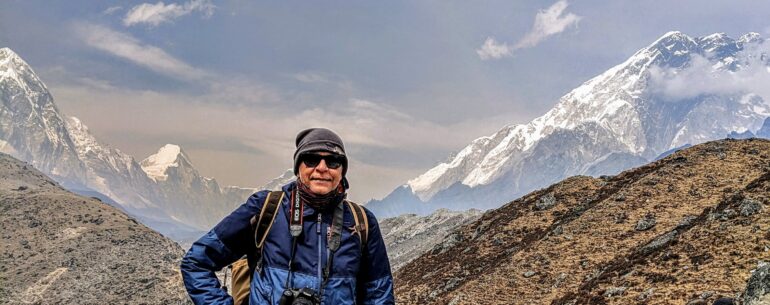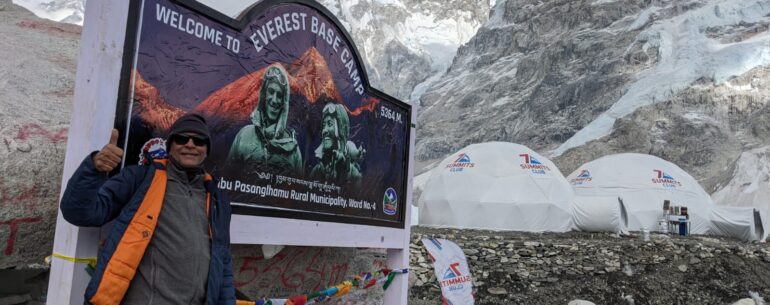Traditionally, a Tea House was designed to serve tea and light refreshments. But the Tea Houses on the Everest Base Camp(EBC) trek route have evolved beyond being a simple Tea House. They are full fledged lodges providing rooms and meals, plus few other amenities. Yet, these lodges are still referred to as Tea Houses in Nepal. Nevertheless, there is no doubt that such Tea Houses and Sherpa porters have made EBC trek accessible to a whole lot of people. Not just regular trekkers.
The quality of accommodation is the best at Lukla and progressively gets more and more basic as one moves to higher altitudes. There is not doubt that providing facilities at higher altitudes is a challenge.
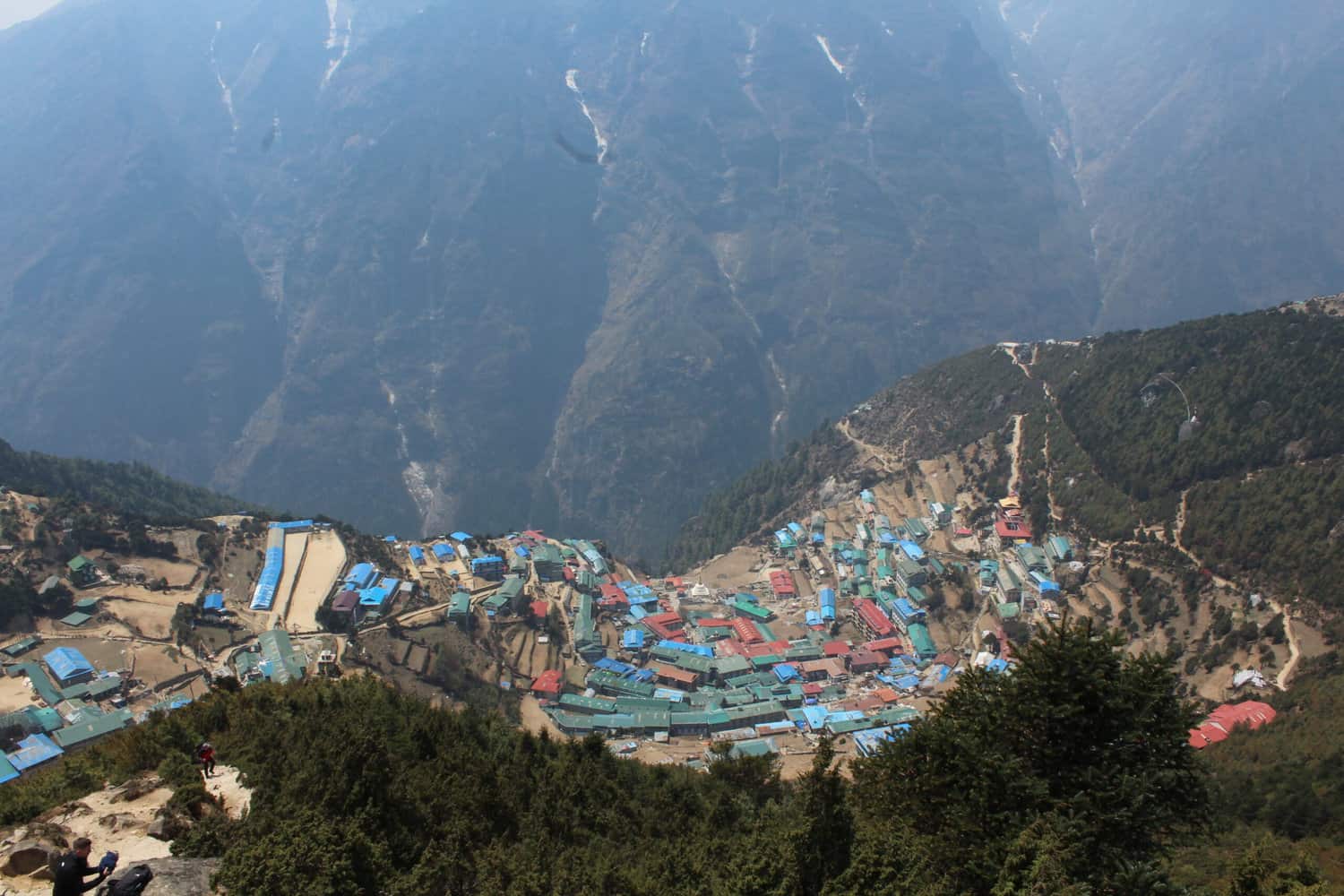

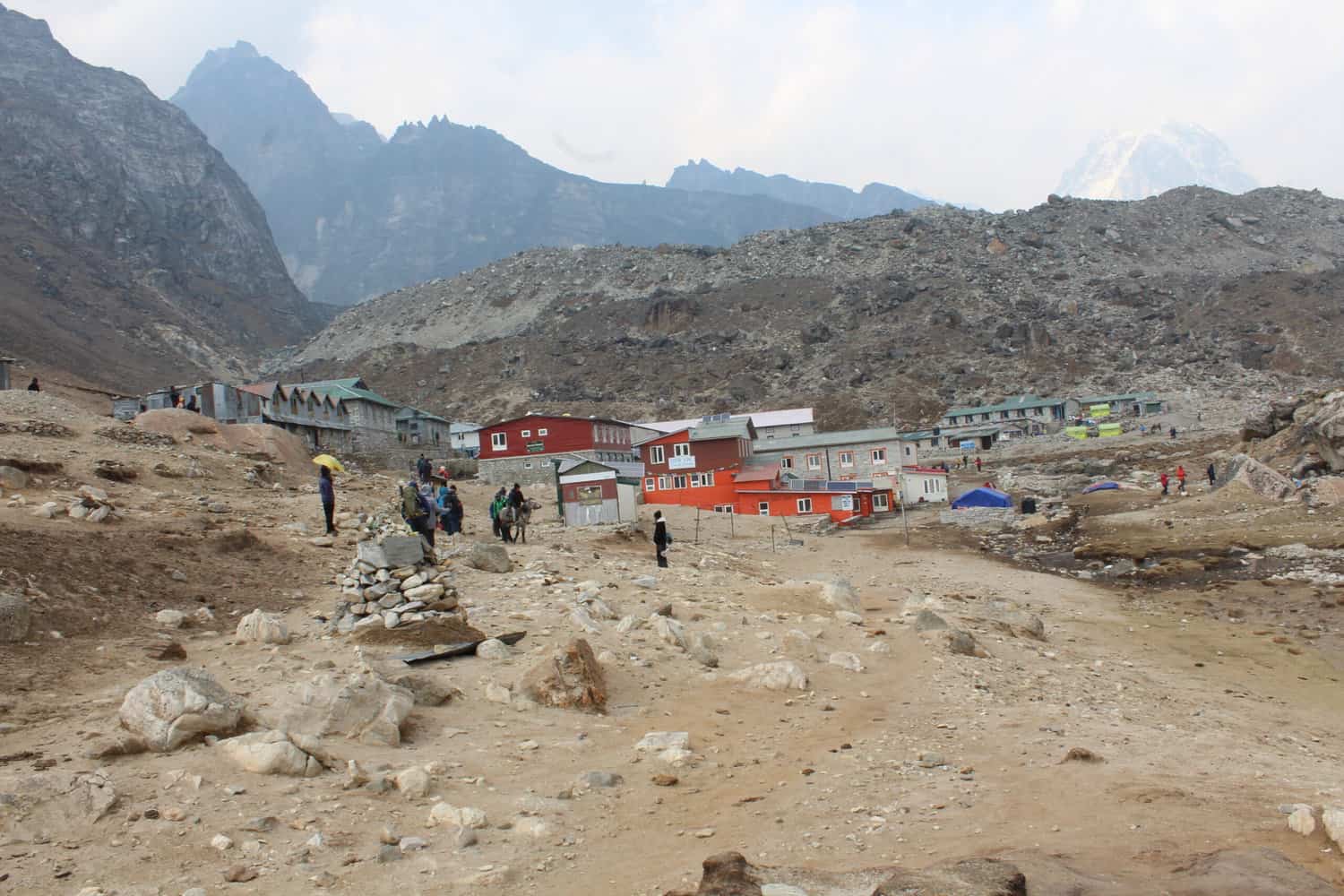

So what does a Tea House offer?
Standard vs luxury accommodation
Certain locations provide accommodation deemed ‘luxury’. My guide strongly believed that apart from better décor and larger room size, a luxury accommodation is not much different from standard accommodation. Facilities may be provided but may not work. Hence, not worth the additional cost which can be significant!
Few of the Tea Houses deemed luxury include the following:
- Namche – Panorama lodge
- Monjo – Yeti mountain home
- Deboche – Revendell lodge/Yeti mountain home
- Dingboche – Stupa Inn
- Lobuche – Eco lodge
- Gorakshep – Snowland Highest Inn
At Deboche and Gorakshep, I stayed in the lodges named above and they are certainly not ‘luxury’! But it is possible some Tea Houses may offer both standard rand luxury rooms.
Typical additional facilities/amenities in ‘luxury rooms’:
- Heated beds/room heaters
- Attached bath with hot shower/ Hot water to wash
- All meals inclusive.
- Free hot drinking water flasks
- Fresh blankets/bed sheets
- Free WiFi
- Charging points
Facilities provided by ‘luxury’ Organisers:
- Fresh fruits
- Returnable down jacket, trekking poles, duffel bag
- Helicopter ride between Kathmandu and Lukla
- Helicopter ride from Gorakshep to Kathmandu
Standard room with attached toilet is a good option
When I made the booking, I was unaware of ‘luxury’ accomodation. On the standard accommodation that I chose, there were only two options-attached toilet or shared toilet. Most of the rooms are twin sharing though single rooms are also available in select locations. I chose rooms with attached toilet and we(myself and my brother) had to pay INR 10k each extra. At Gorakshep and Lobuche, rooms with attached toilet were not available.
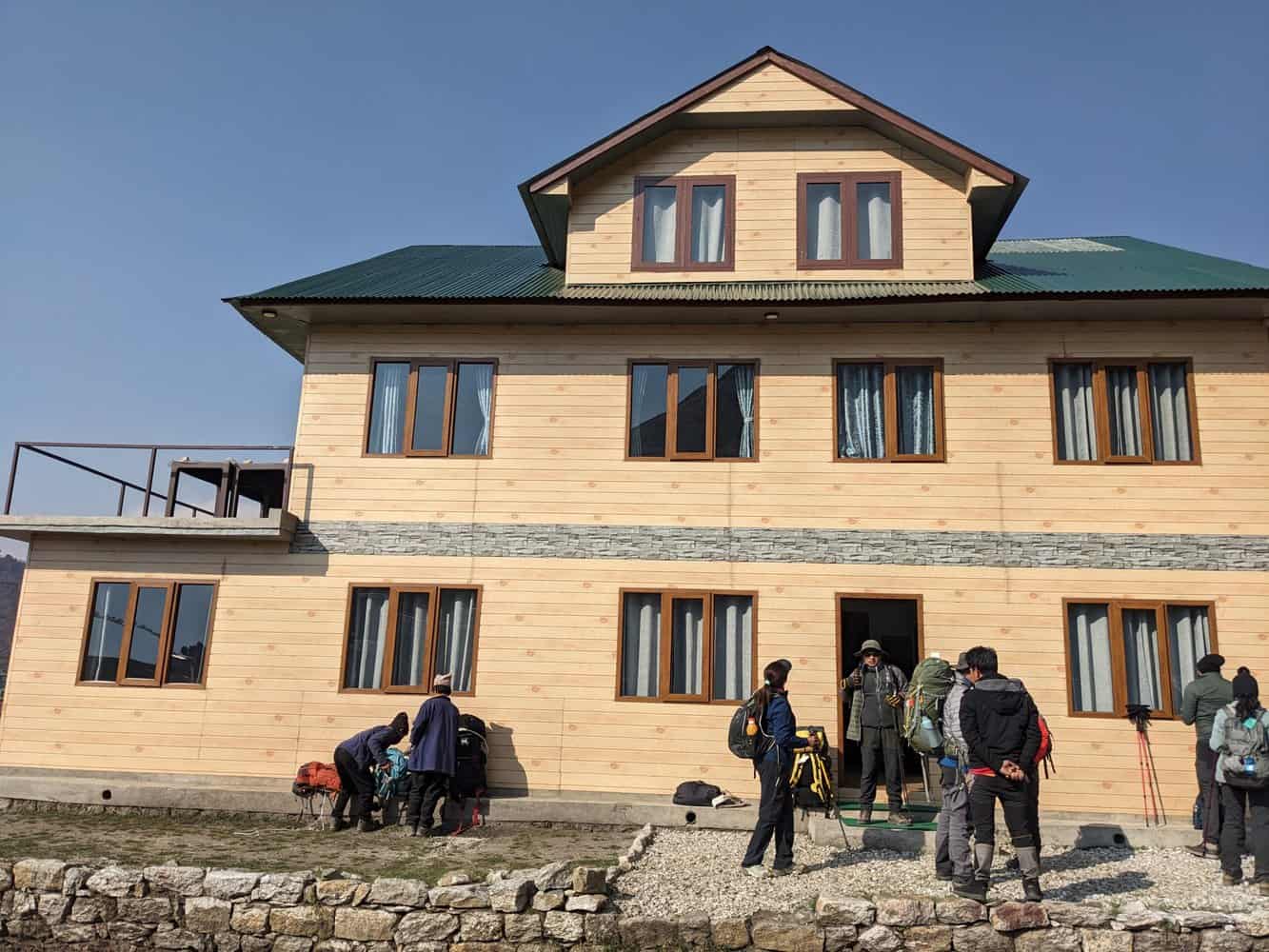
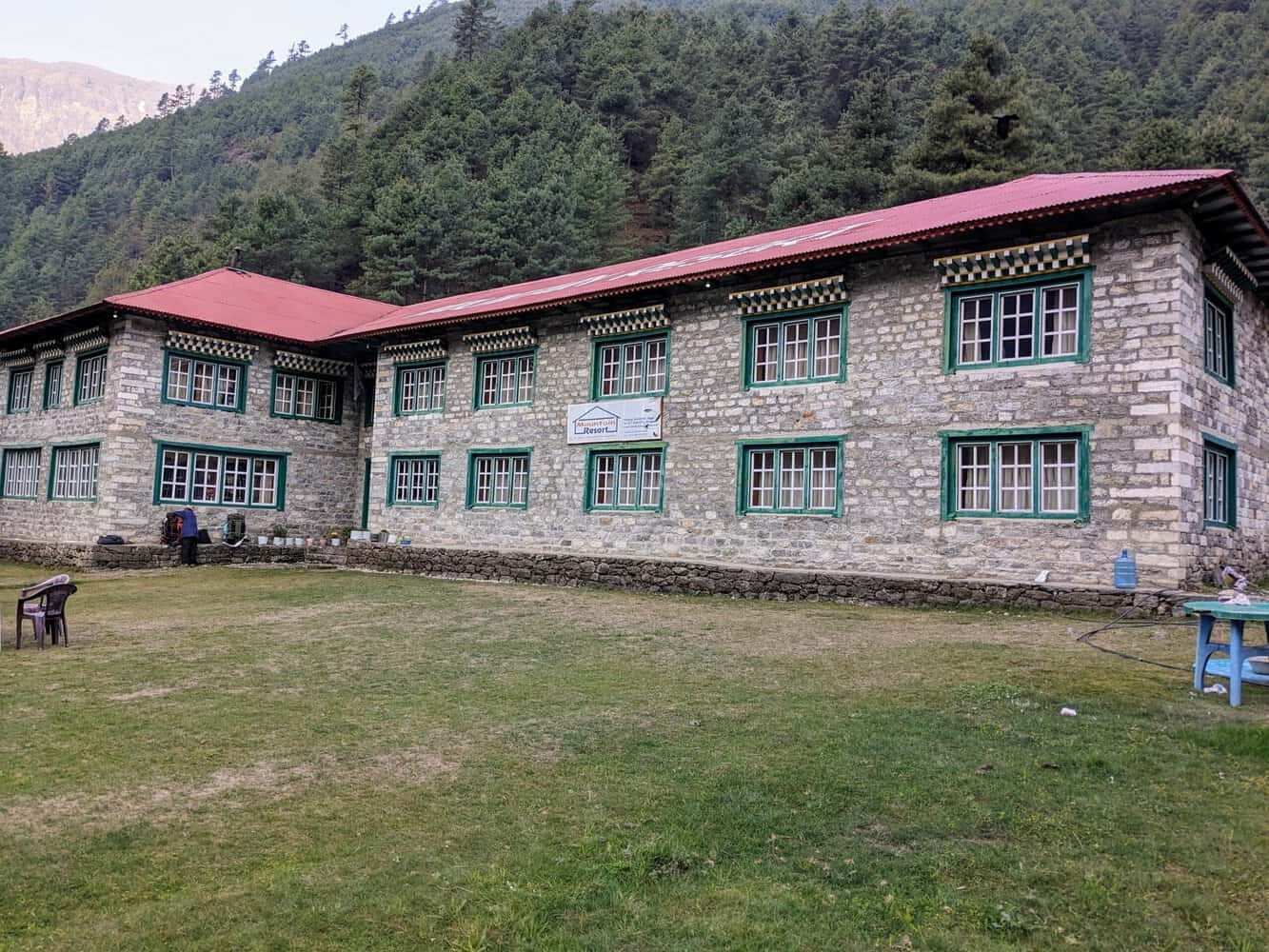
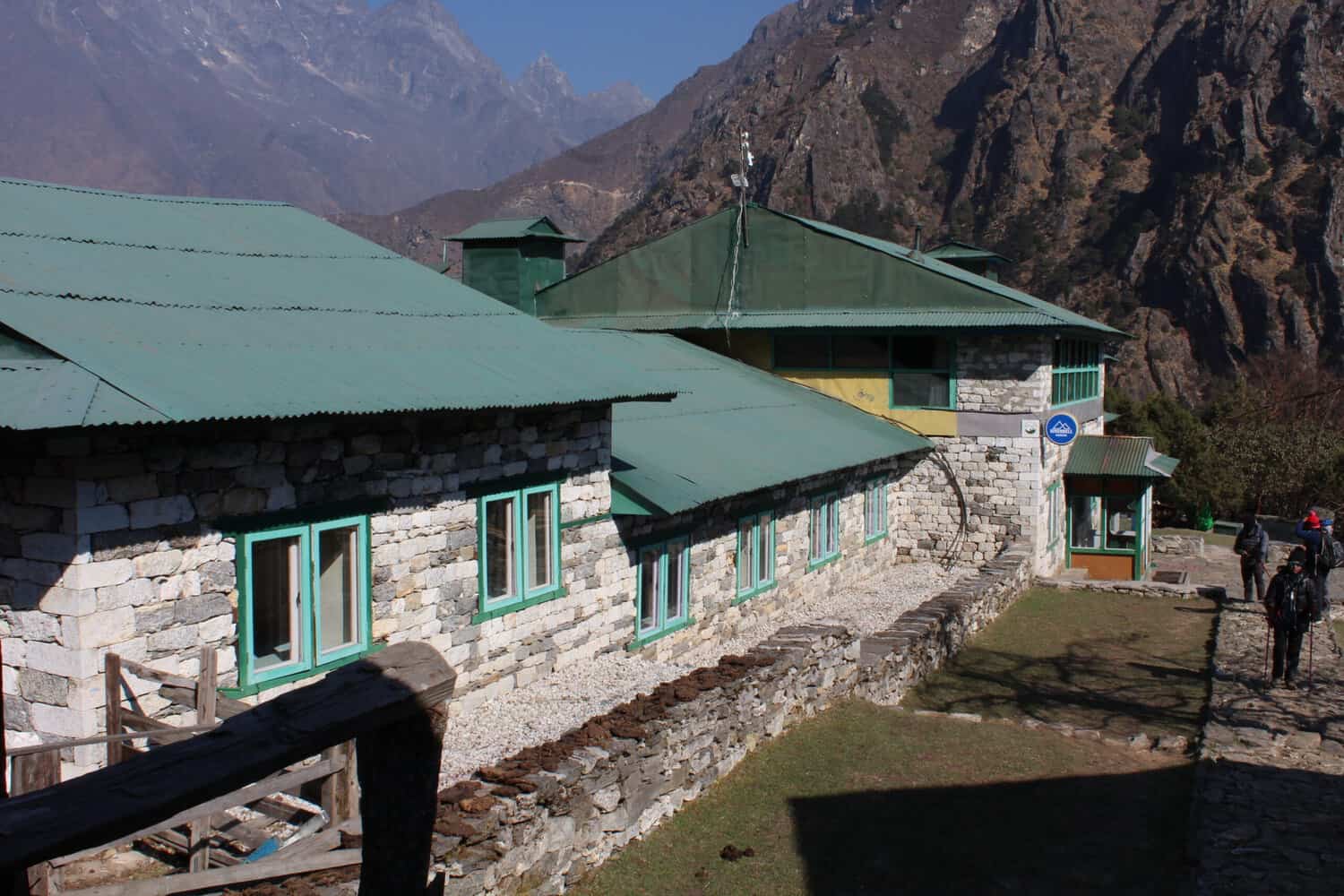

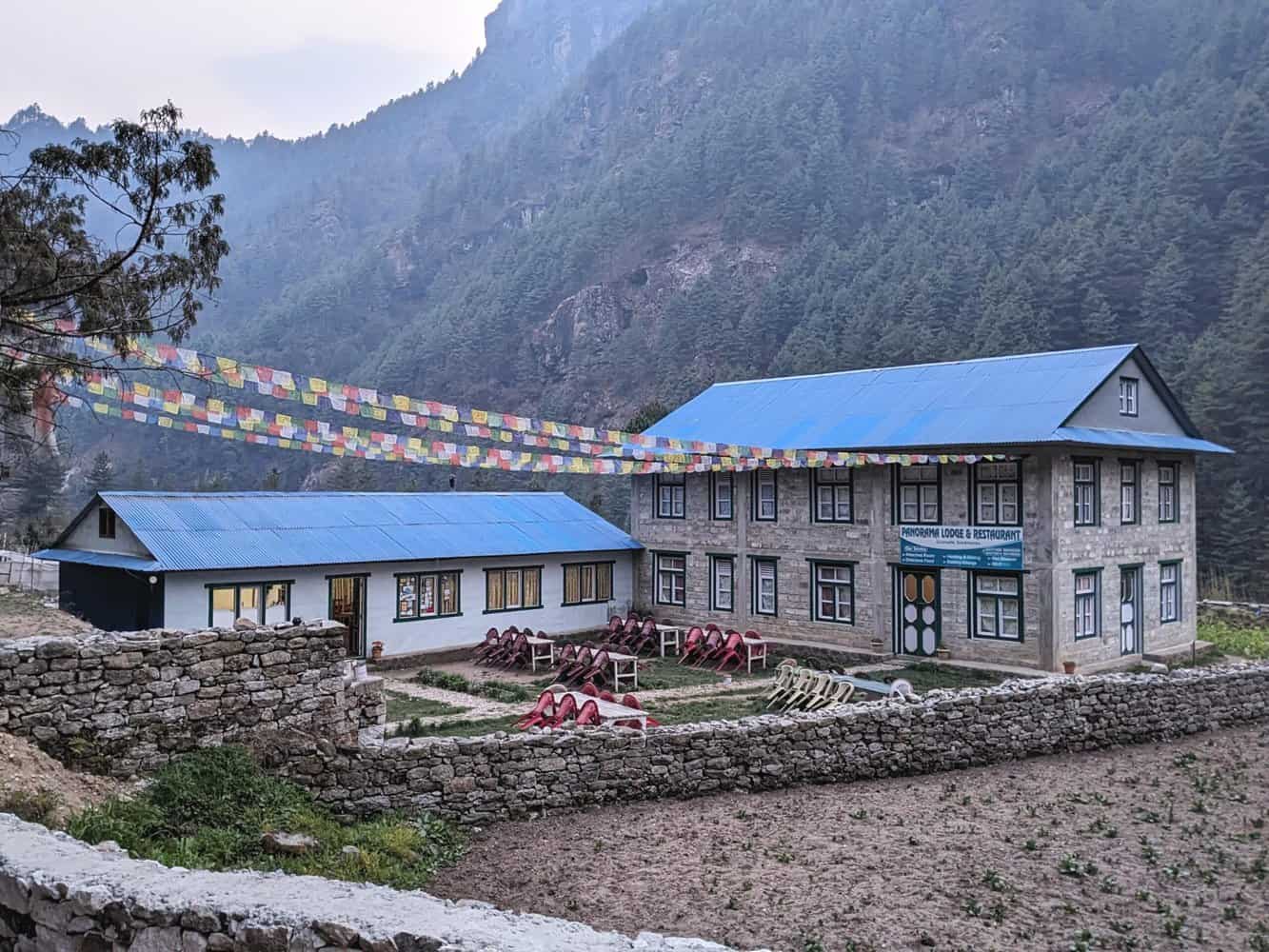
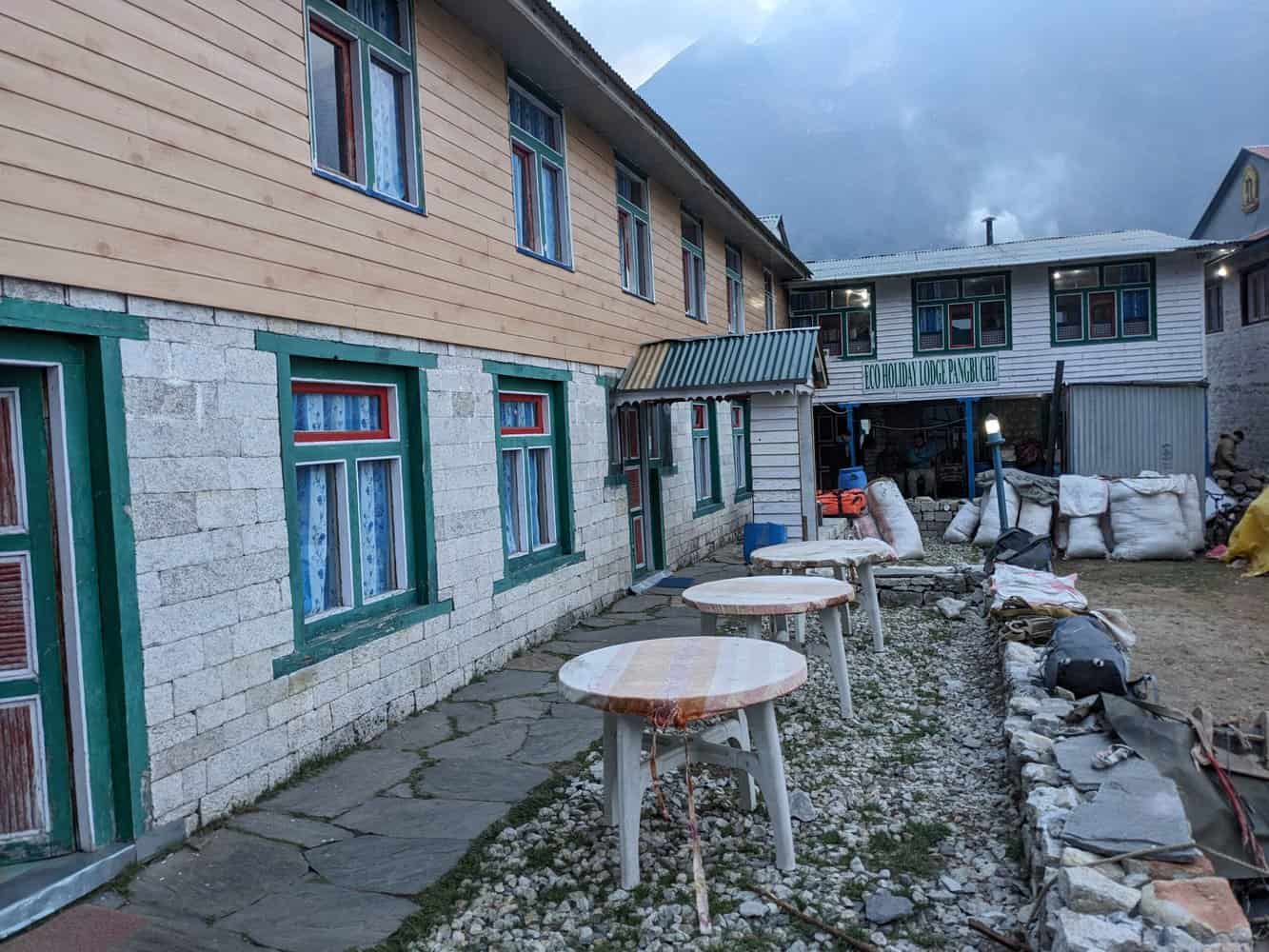
What it is like to stay in a standard room in the Tea Houses
- Rooms are generally small, maybe 100sq ft. or less. A table was provided only in couple of locations but there was no other storage space. Lights are often quite dim, making reading difficult.
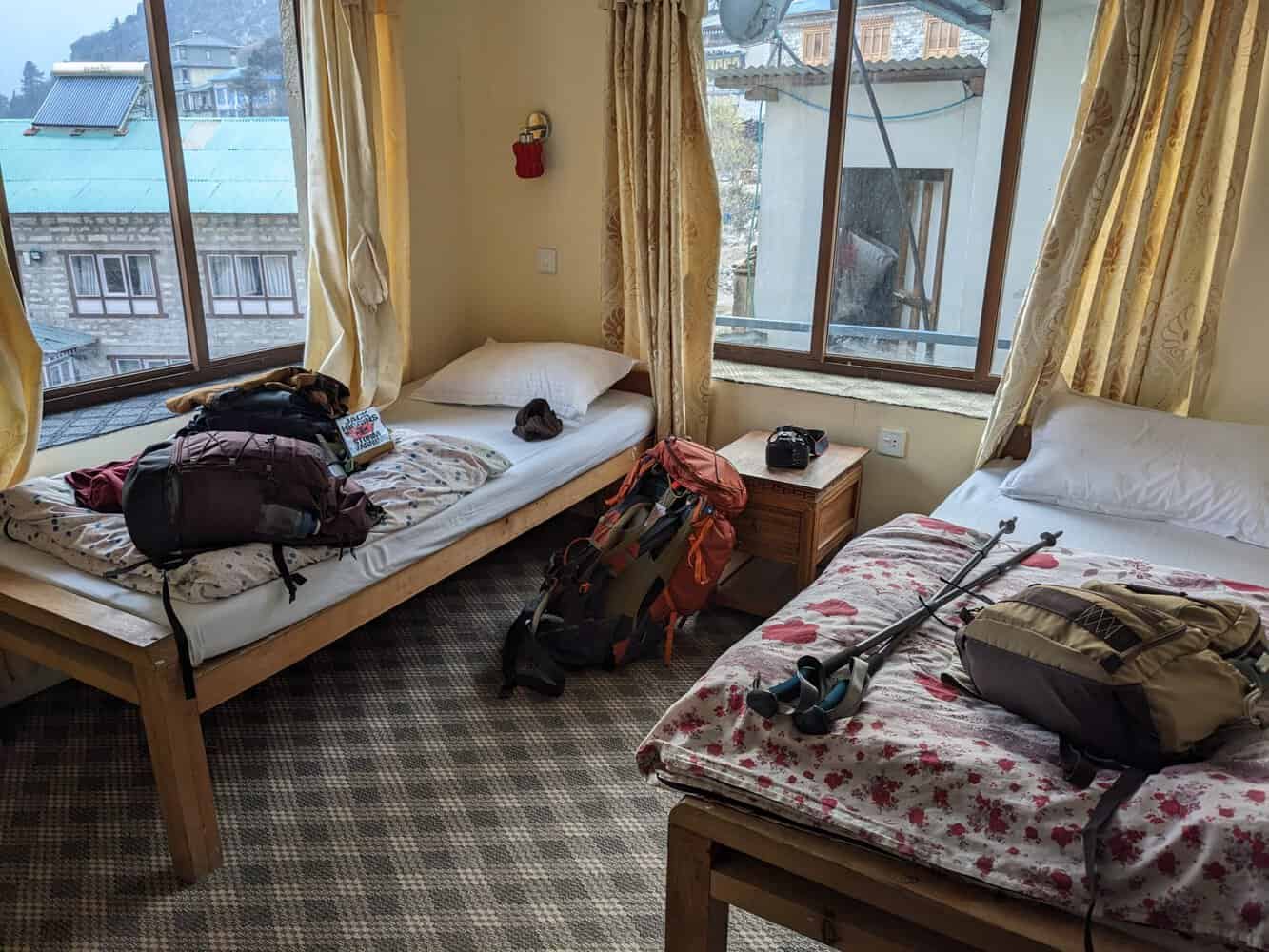
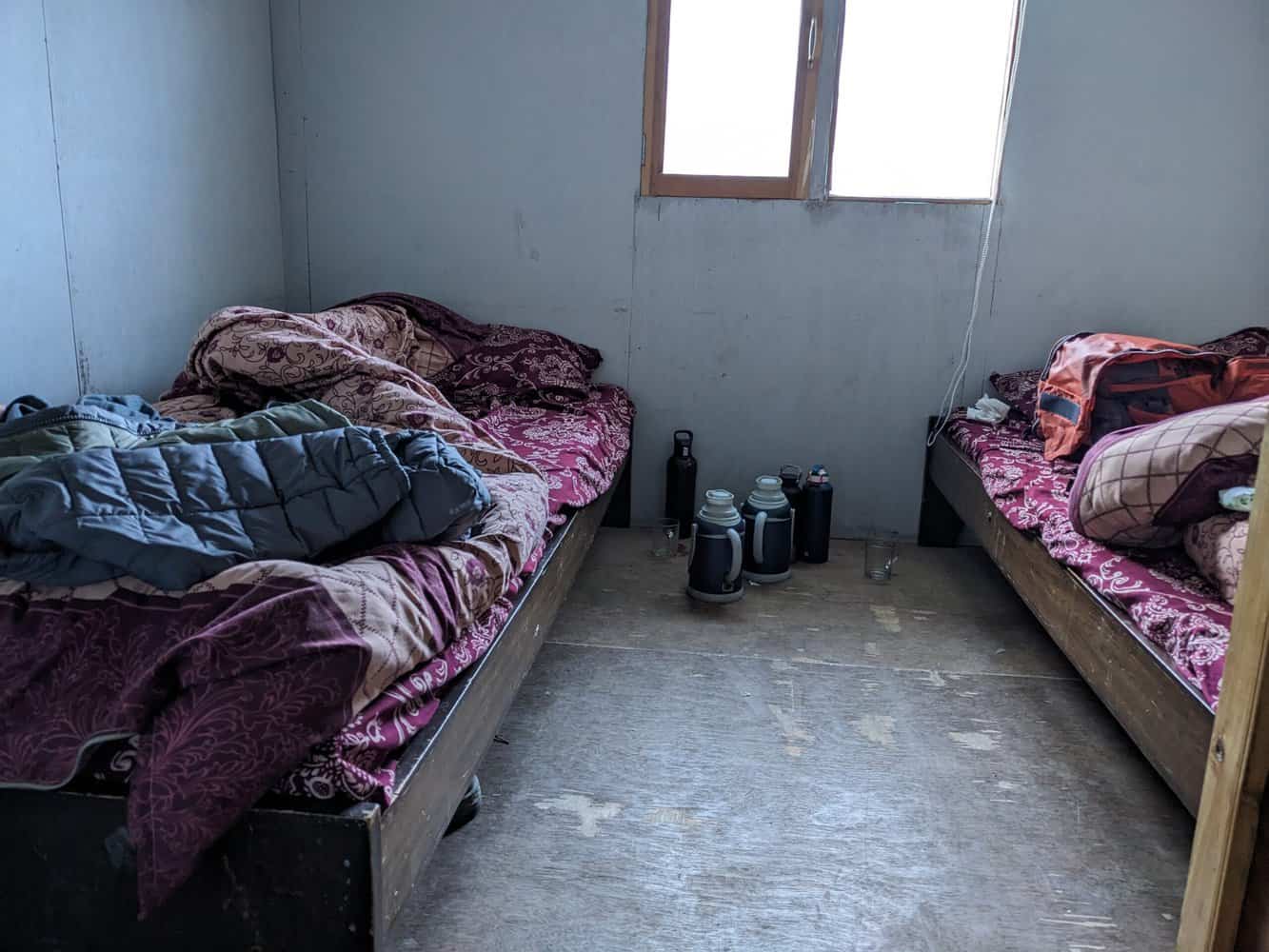
- The toilets were western type with flush till Dingboche. At Dingboche, water had to be poured from a container. The Tea Houses at Gorakshep and Lobuche provided only common squat type toilet. One in each floor. No flush and water had to poured from a container. But in Lobuche, I happened to visit New EBC Guest House on the way down. The toilets here are western type with flush. Well maintained too. Possibly luxury category.
- The wash basins at Lobuche and Gorakshep were in common area, outside the building. Hot water was provided in Lobuche on request.
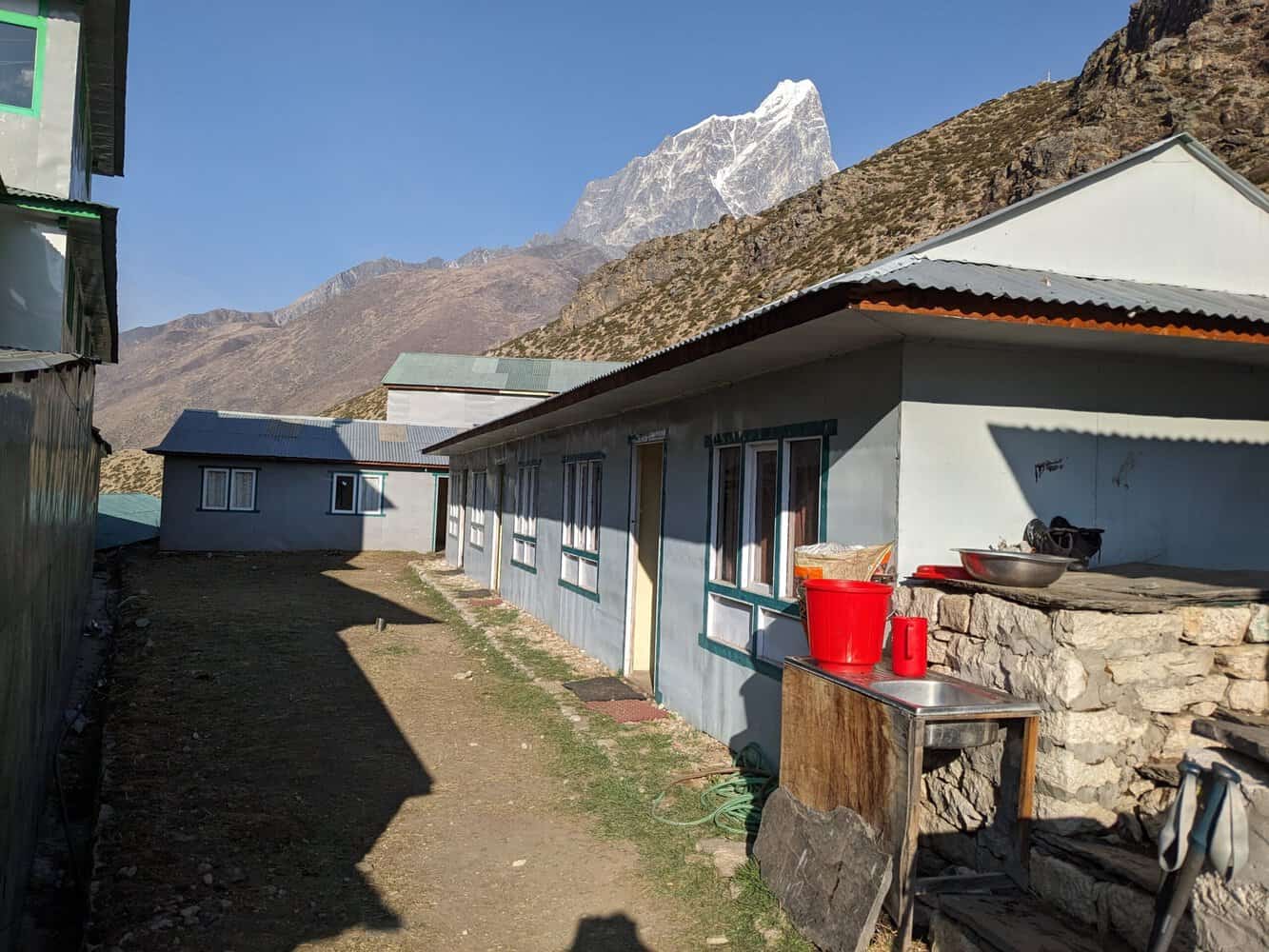
Pillow/blanket covers, bedsheets are washed once a week
- Pillow, bed sheets and blankets are provided but the pillows and the mattresses were sometimes hard and not always comfortable. Extra blankets are available at additional cost except when the tea house is fully sold out. These were by and large adequate when I slept in fleece pants, fleece jacket and monkey cap. The pillow covers, blankets and the bed sheets looked clean though I have been told they are normally washed only once in a week. Only in Deboche, towels were provided.
- Some of the Tea Houses were a bit noisy. Wooden flooring and plywood walls meant footsteps are easily audible. So are loud conversations in adjoining rooms!
Hot shower room not always convenient
- Hot shower area was separate. No hot shower in Lobuche and Dingboche. It is LPG(gas) based which meant a window had to be always kept open! I did feel a bit chilly at times. The hot shower area is not well maintained and convenient everywhere. Costs vary between INR 300 to 500 per person. I read somewhere that hot showers are not advisable at higher altitudes! Requires deeper dive.
- Charging points were generally available in the room except at Khumjung, Lobuche and Gorakshep. But I learnt they are not available in all the rooms. Charging points are available in the dining area but not free. Cost ranges between INR 150-350 for a mobile and more than double for Power Bank.
- Individual rooms are not heated but the common dining area is.
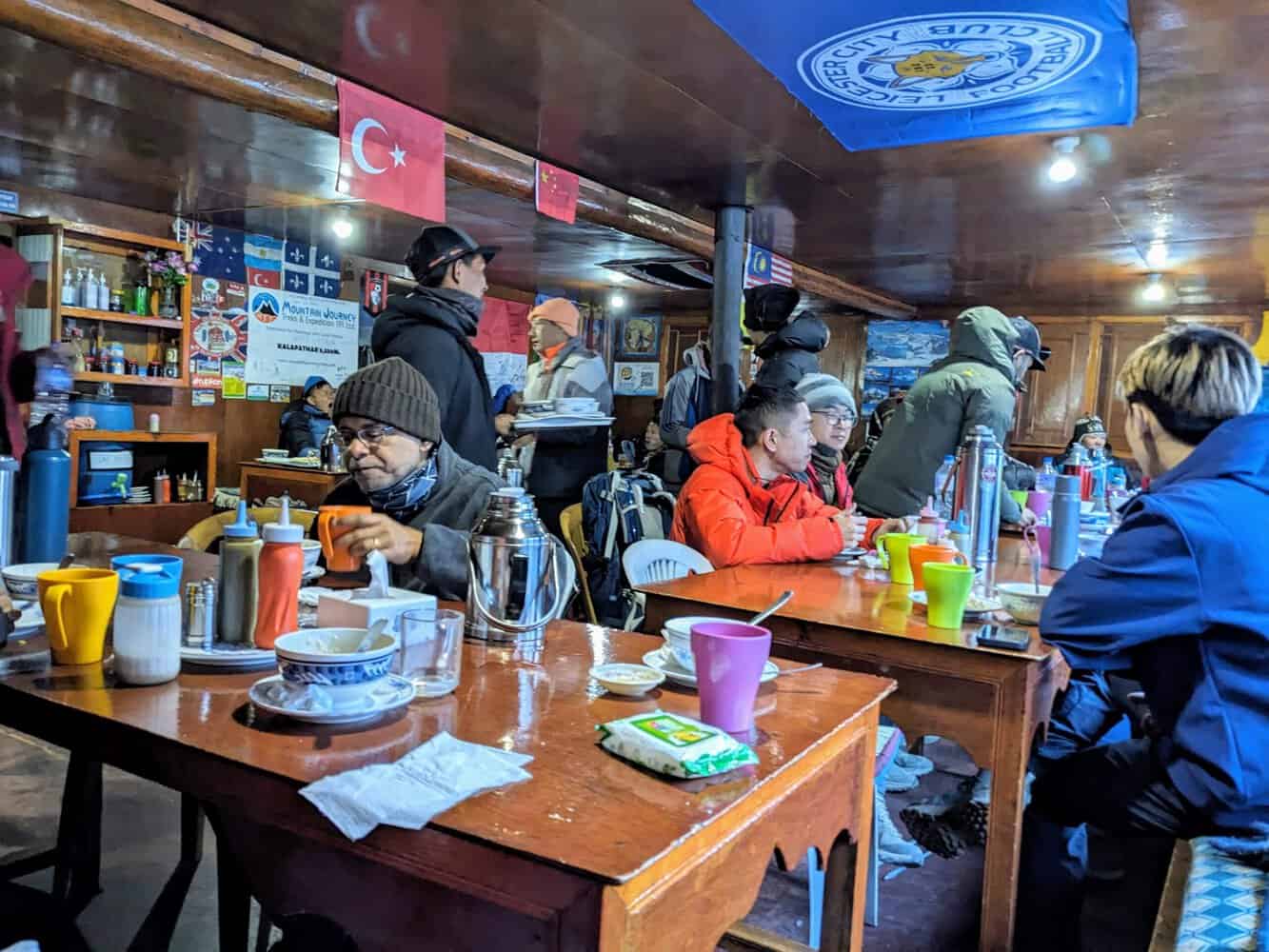
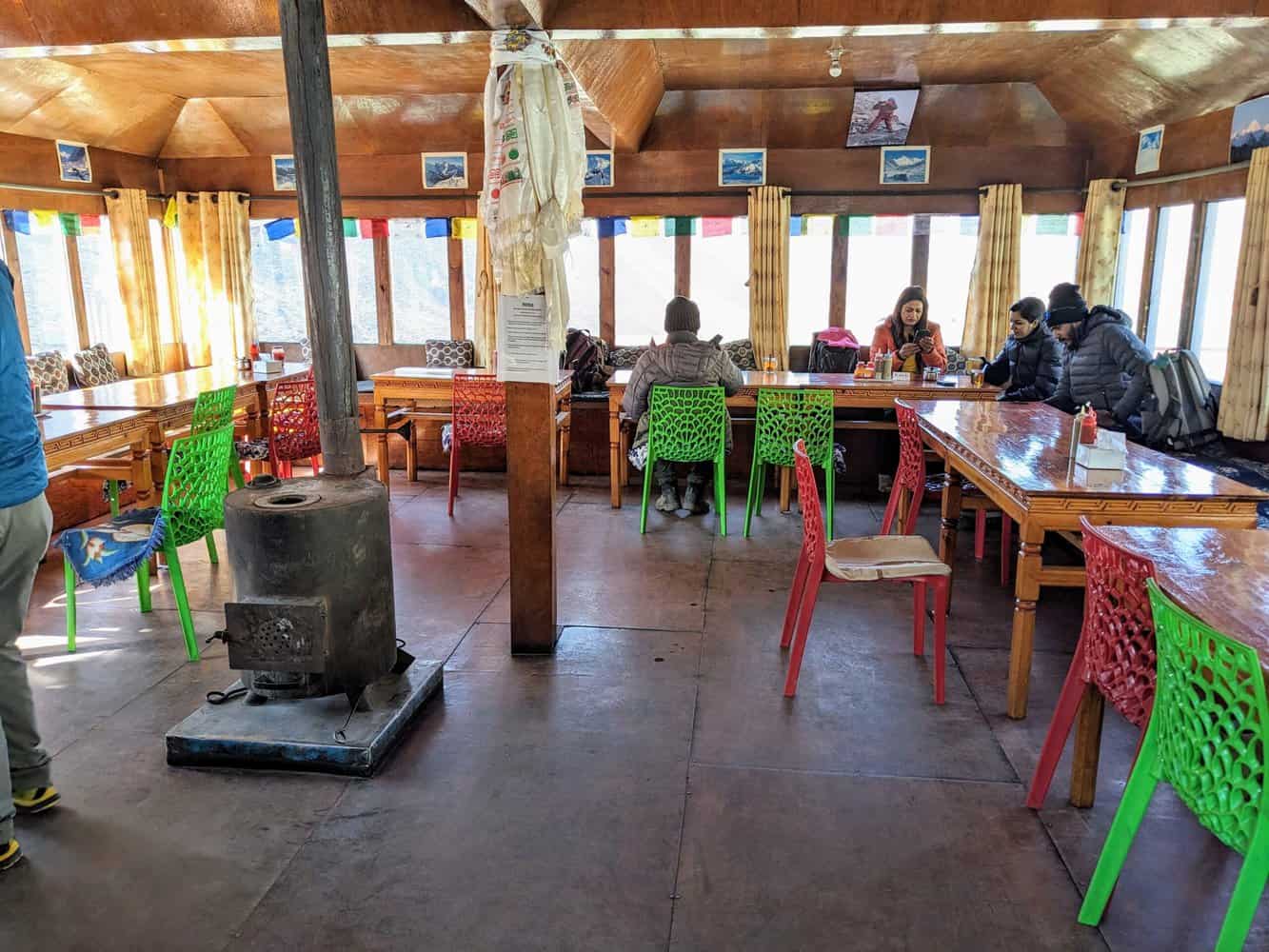
- Whether Wi-Fi or a local SIM or international roaming, data connection is unreliable. For 3-4 days, from Dingboche, there was no data connectivity except at EBC. But even there, I could not make a video call. Wi-Fi is chargeable and not free. Charges vary, starting at INR 300 or so and goes beyond INR 500 for 24 hrs.
Comfortable overall
Overall, I did not face any discomfort. Yes, the rooms and toilets could have been cleaner but this was known and I was prepared mentally. I did not enquire into the per night rates but should be ~ INR 500 per person on an average. The room rents will be much higher if food is not consumed in the Tea House.
Step out early in the morning
The skies are generally clear early in the mornings, say around 6am, when the sun has not risen high. This is possibly the best time to view and capture some good shots of the mountains. Later in the mornings, the snow in the mountains reflect sunlight thereby creating a hazy atmosphere.
Meals
The tea houses serve both vegetarian and non vegetarian dishes. And beverages – both alcoholic and non alcoholic The general advice is to avoid non-vegetarian food and alcohol, caffeinated beverages, at least on the way up. I was also advised to avoid bakery items as they may not be fresh.
My typical vegetarian menu over the days.
Breakfast
- Tibetan bread
- Porridges(Oats, apple, banana etc.)
- Stuffed Parotha
- Tea (essentially hot water with ginger, sometimes with Lemon and honey)
Lunch
- Noodles/Vegetable soup
- Cheese/tomato Sandwich with French fries
- Steamed Momos
- Spaghetti
- Stuffed parotha
Dinner
- Garlic soup
- Dal Bhaat(local set meal)
- Stuffed parotha
Each meal costs a minimum of INR 500-1000 or so on an average, depending on the altitude. And number of items consumed. Food tastes good when hot. Fresh fruits are not served and vegetables are limited to carrot, potato and some kind of local greens.
By and large, the menu items were standard in all the Tea Houses I visited. Other items available include muesli, eggs, bread, Chowmein, fried rice, noodles, potato wedges/fries, pizza in few places, and so on.
Water
Bottled water is available all through. As advised, I stuck to sipping hot water at the Tea Houses. Hot water flasks were available in all the Tea Houses and cost ranges between INR 100-350 for 1 litre. Bottled water(1 lite) too costs INR 50-300 or so.
We were initially advised to drink running stream water after purifying it with tablets. More from a sustainability and cost perspective. In the initial days up to Deboche, I did mix boiled water with tap water and dropped water purification tablet in the bottle before consumption. Thereafter, it was a mix of bottled water and boiled water. I did see few trekkers filling bottles from running streams but I was not inclined to do that.
Snacks
Snacks are a must to munch during the rest periods, as one has to avoid eating heavy breakfast and lunch. Roasted dry fruits, chikis, multi grain ladoos, chocolates, energy bars, khakra etc. are all useful. I made the mistake of taking some healthy stuff such as plain almonds but they did not taste good at all when the mouth is dry. But try and avoid items with excessive sugar and salt content. ORS is useful but it did not taste good, possibly due to quality of water.
Most importantly, carry fresh fruits, preferably from Kathmandu. Fruits are not provided in the Tea Houses(except for small pieces of apple in Apple porridge). I carried bananas, apples and oranges. I did see apples and bananas(and carrots) being sold on the way up but an apple that costs INR 50 in Kathmandu costs up to~INR 250 higher up.
The Tea Houses I stayed at:
- Khumjung – Hotel Sherpa Altitude. Khumjung is a beautiful village and I am glad my Organizer chose this village for overnight halt. The ladies in this newly constructed Tea House were genuinely welcoming and took pains to explain they make everything fresh. I had hot ‘aloo parotha’ for dinner and it tasted great, given the circumstances. I was even encouraged to visit the kitchen that was very neat and clean.The only Tea House that had an ‘electric heater’.
- Phakding – Mountain Resort. Also newly built. Comfortable rooms. Hot shower area was a big minus.
- Namche Bazar-Comfort Inn
- Deboche – Rivendell. Only Tea House to provide towels.
- Dingboche – Grand Himalaya
- Lobuche – Peak XV. Dark and dingy. I would place it at the bottom among the Tea Houses I stayed in.
- Gorakshep – Snowland Highest Inn. Airier than the one at Lobuche. I had a last minute change in the Tea House as the one booked in advance was full. I was told this is quite common during peak season. Luckily, rooms were available here. Else, I would have had to sleep in the common dining area.
- Pangboche – Eco Holiday Lodge
- Jorsalle, near Monjo – Panorama Lodge and Restaurant
- Lukla – don’t recollect but it was the best Tea House on the trek.

